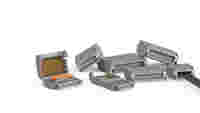How do moisture and humidity form in a junction box? Condensation can arise from rapid temperature changes, for example. This is often the case during transitional periods, such as spring and autumn, when the warm air inside the housing meets the cold housing wall of the connector chamber and it cools down abruptly. The result: condensation on the housing’s inner wall. This physical effect is further magnified by power loss, which increases heat compared to the outside temperature.
These temperature differences also lead to pressure differences, which allow fresh air to flow into the connector over and over, introducing moisture. In total, a considerable amount of water can accumulate within the connector.
But heavy rainfall or a strong water jet too close to a distribution box can also cause moisture in junction boxes. “The moisture within the connector can then cause the current to take completely new paths, quickly leading to a short circuit.” However, this is often only noticed when protective devices are triggered, i.e., when the fuses blow.

